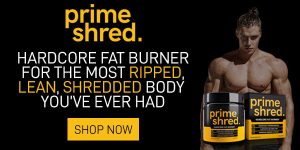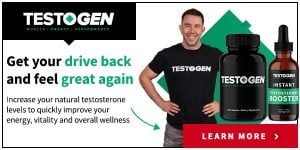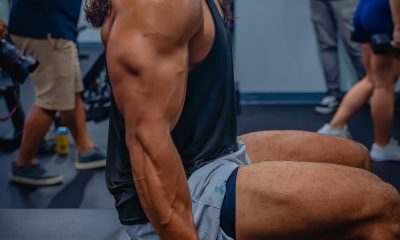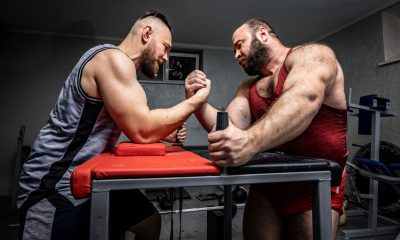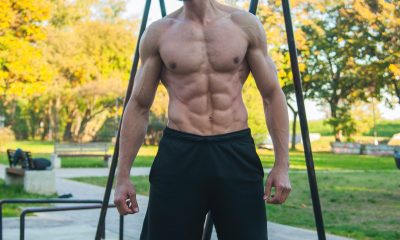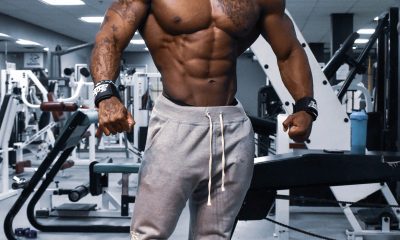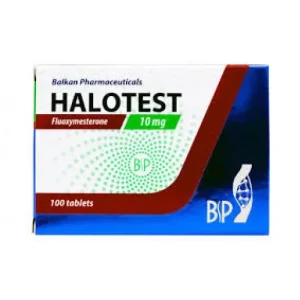Steroids
Top 10 Sports where Players Use Steroids
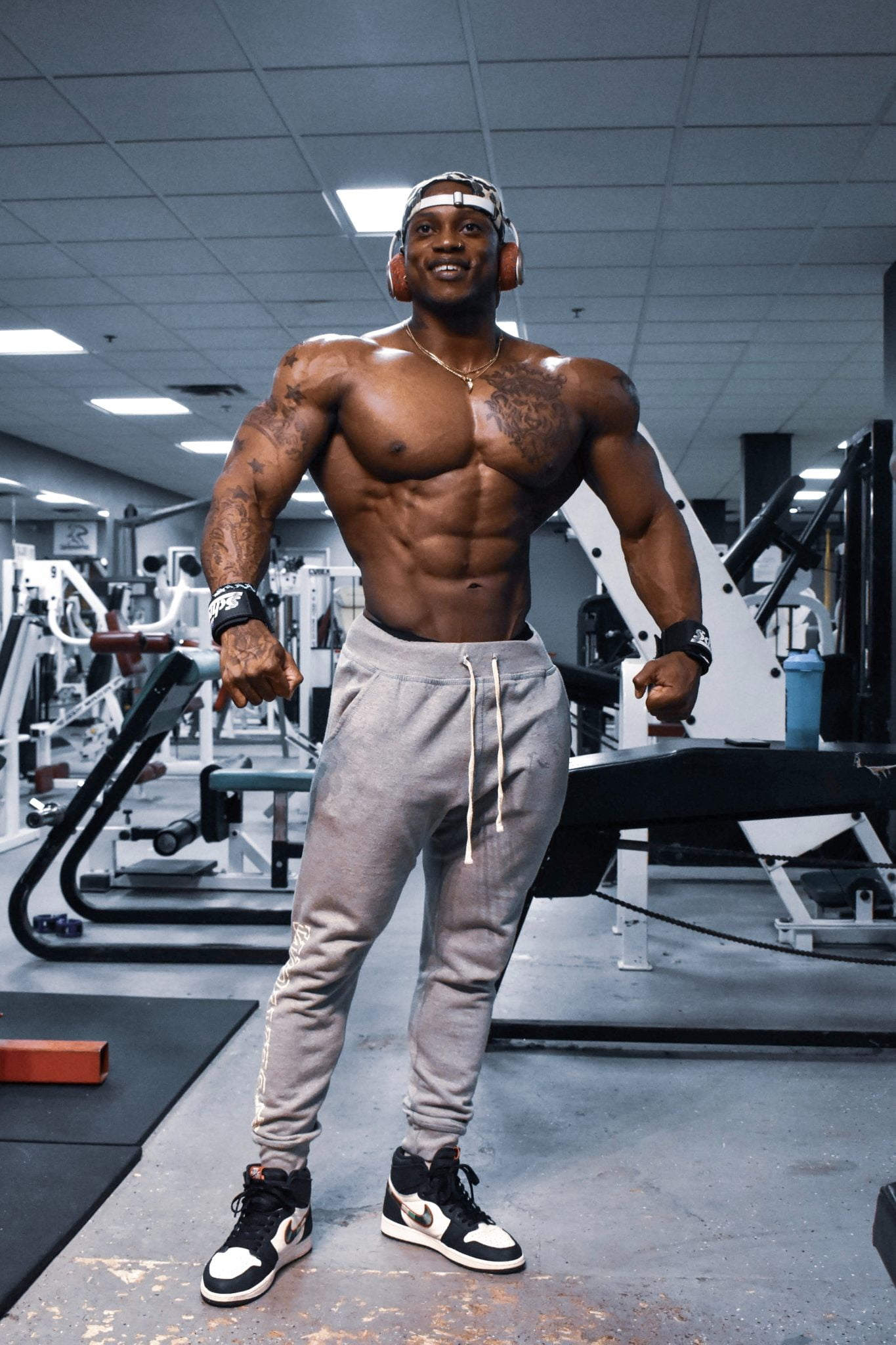
Sports players are always prepared to win individually or as a team at all costs. The pain of losing is unbearable, sometimes. Sportsmen and women participate in their respective sports at the local, regional, national, and international levels for different reasons. While some do so to satisfy themselves, most compete for fame and recognition. The latter group of athletes is prepared to do anything to succeed in the competition. Anything that will put them in front of the eyes of the world is an option worth exploring. And it comes with humiliation and loss of morale. Although doping, better known as the use of performance-enhancement drugs, is illegal in most sports, players continue to do it. We are going to look at steroids in sports in this article.
Steroids in Sports
Anabolic steroids refer to roids, pumps, hype, and juice in sports. Although many people view steroids to be generally illegal, they are, in fact, powerful prescription drugs—most anabolic steroids are derived from testosterone. When not misused, anabolic steroids sometimes treat specific disorders, including managing cancer forms. On the other hand, it can be fatal, so their use has not been given the green light by most governments and organizations. Consequently, steroids are prohibited in most sports because they are harmful and give users an unfair advantage over the rest.
We don't know the exact number of athletes who use steroids, but we know sports where they compete. We also know they are many, even though most of them have not. Some are in contact sports, while most are on track. Although sports regulatory bodies have tried to crack the whip on steroid-using athletes, they have not eliminated the vice. Somehow, athletes are still finding ways to cheat their way to victory.
Must Read:: The History Of Steroid Use By Athletes
The top 10 sports where athletes use steroids:
Baseball
Baseball players have used steroids to enhance their performance for many years without being detected. However, before 1991, there was no clear rule prohibiting doping in baseball, so we cannot say the players broke the rules.
In the years that followed, I discovered that the prevalent use of steroids in sports gave some teams and players an upper hand. Consequently, the use of steroids in baseball was banned in 2005. Since then, there haven't been many steroid use cases reported, but the players keep using them. The BALCO Scandal of August 1, 2005, involving baseball player Palmeiro, saw the Major League Baseball Players Association call for stricter regulations on doping in baseball.
Track and Field
Doping in Olympic games started as far back as the 1968 Summer Olympics when Hans-Gunnar Liljenwall, a Swedish pentathlete, tested positive for PEDs (Performance Enhancement Drugs) alcohol. As a result, she lost her bronze medal and became the first athlete to be punished for doping. Since then, athletic regulatory bodies have tightened the rope on doping to ensure everyone's level playing ground. However, athletes continue to invent new ways of cheating the system and performing beyond their natural abilities.
The fight against doping at the Olympics was derailed by sabotage. It happens in and without the International Olympic Committee (IOC). For instance, the KGB was accused of posing as anti-doping authorities to undermine doping tests on Soviet athletes in the 1980 Summer Olympics. It was not until the 1990s that the IOC started taking a more organized approach against doping in athletics. The new regulations saw the introduction of efficient testing methods and harsher punishments for athletes who used doping substances. Some of the steroids in sports that the International Olympics has banned
Committee includes:
- Stanozolol
- Mibolerone
- Boldenone
- Oxandrolone
- Danazol
- Trenbolone
- Methasterone
- Bolandiol
- Furazabol
- Norclostebol
Bodybuilding
Bodybuilders use anabolic steroids for two main reasons; to build muscle and recover from injuries sustained much faster. Although there are no tight regulations against steroids in bodybuilding, the drug's side effects are not hard to notice. Bodybuilders rarely seek treatment when affected by steroid use, which is partly why data on steroid use in bodybuilding is scarce. Additionally, bodybuilders tend to distrust professionals when it comes to steroids. All in all, steroid use is very much prevalent in bodybuilding despite the adverse side effects.
There have been calls to test for steroid use during major bodybuilding competitions, such as Mr. Olympia, but the National Physique Committee has been reluctant to heed those calls. Somehow, bodybuilders are more responsible for steroid use than in other sports, which is not prohibited. Additionally, steroids help bodybuilders burn fat and build more muscle.
Basketball
The use of steroids in basketball has been ongoing for some time now. For instance, the National Basketball Association (NBA) has seen a sharp rise in suspensions due to substance use. However, the most abused performance-enhancement substance by the new generation of NBA players is not a steroid. The latest breaks are due to the growth hormone, Ipamorelin. The hormone helps players reduce fat and increase lean muscle. Chandler is the latest high-profile NBA player who did for using the substance.
Regarding steroids, basketball players use them to increase their muscle mass and overall performance. The NBA first came up with an anti-doping policy in 1983. Since then, players caught using outlawed substances have between 5 and 20 game bans. Other notable NBA players to test positive for performance-enhancement substances, precisely steroids, are Don MacLean and Matt Geiger.
High School Sports
If you think steroid use only happens in professional sports, think again. The fact is that steroid use occurs at the high school level, where participants use them to shine in their respective fields. Sometimes the young lads face tremendous pressure that pushes them to take shortcuts. You may wonder where these youngsters got to know about performance-enhancement substances. In a world where information moves thousands of miles in the blink of an eye, I wonder no more. Social media has been particularly central in exposing high school students to substance use, including anabolic steroids. Furthermore, most teenagers who want to pursue careers in professional sports do anything at an early stage.
Steroid use in high school games continues to take a toll on the competition because they rarely test players. For example, in the United States, only 20% of schools test their players for PEDs before sending them to competitors.
NFL
Steroid use in the National Football League sometimes started before 1987. Currently, the sport's governing body prohibits all performance-enhancement substances. NFL tests players for substances such as steroids once per season.
Those found to have been using them are banned for a minimum of 4 games. Although the body regularly increases the number of random tests every season, anabolic steroids have doubled since the 90s. Anabolic steroid use is seen in professional American Football and high school and college football. Richard Sherman was the most prolific NFL player to test positive for PEDs. He subsequently made a successful appeal that saw him avoid a 4-game ban imposed by the NFL.
Soccer and steroids in sports
The football association has not seen widespread steroid use, but we cannot say it is not there. It is more of a case of missing evidence rather than no use. The late Argentine soccer star Diego Maradona used cocaine later in his soccer career, especially in Napoli and Barcelona. Lately, soccer management bodies are putting more stringent measures to control the use of banned substances in the beautiful game. That includes furthering PEDs investigations among players, improving data collection strategies globally, and developing effective detection techniques.
Before the 2006 FIFA World Cup, the soccer management body ratified the World Anti-Doping Agency (WADA). However, FIFA has not put strict measures in place to battle the use of performance-enhancement substances. It only applies a 2-year ban on soccer participants found to be using prohibited substances. In the 2010 FIFA World Cup run-up, WADA announced that it would increase offenders' punishment from a 2-year to a 4-year ban.
Cycling
Widespread steroid use in cycling was first witnessed in the 1970s. Unlike in most sports, where performance-enhancement drugs are used to build muscle, steroids improve cycling recovery.
Research has shown that most unfit men in cycling use synthetic testosterone to compete with more fit ones. Over the years, there have been reported deaths among cyclists who have used steroids and other PEDs in competition. The first case of fatal doping in cycling was that of a Welsh cyclist who died after combining cocaine, caffeine, and strychnine. Lance Armstrong, a US cyclist, was handed a life ban and lost previous results after testing positive for a banned substance.
Boxing
There is a dark side of boxing that many people don't know about: illegal PEDs. Notable boxing icons have been linked to steroid use to enhance their performance in the ring. The mouth-watering money returns associated with boxing are why participants resort to using banned substances to beat their opponents.
However, as in bodybuilding, steroid use in boxing goes undetected for various reasons. One such reason is the fact that boxing competitions don't happen often. If a boxer has been using steroids a few months before the actual battle, the substance may be hard to detect in their system. Kid Galahad, an undefeated boxing professional from the UK, was recently banned for two years after testing positive for Stanozolol. A popular steroid used by boxing professionals.
Triathlon and Steroids in Sports
Although triathlon is not well known in most parts of the world, it somehow made it to our top sports list where players use steroids. It is worth noting that virtually every triathlon player caught doping has not performed better than those who don't use PEDs.
So one wonders, why are they taking the drugs in the first place? Dmitriy Gaag of Kazakhstan is the closest player ever to winning a title in the 2000 Olympics after using drugs.
Related Article:: How Do American Swimmers Manage to Trash Cheating Scumbags Without Steroids?
Conclusion
Steroid use in sports continues to be a big problem, and the end to it is nowhere in use. Sports governing bodies are trying to properly fair completion by prohibiting steroid use and protecting athletes. However, sportspeople don't seem to buy this line of thought. More of them continue to use steroids in different sports to enhance their performance and improve recovery.
While steroid use has helped many of them cling to titles. Some have not been very lucky and have died or become seriously ill after taking the drugs. That begs the question, what is the difference between the two kinds of steroids in sports users? The answer lies in the steroids they use and whether they use them correctly or not. As mentioned earlier in this article, most steroids are prescription drugs used to treat certain conditions.
Overall
Whenever a drug or misused, there are bound to be consequences. That is why regulatory bodies for most sports have banned drugs in their sports. However, some sports, such as bodybuilding, do not entirely prohibit the use of steroids by participants. If you are really into steroids and not ready to stop using them, you avoid some sports altogether. Furthermore, you can always choose those sports that do not have strict anti-doping policies and excel.
Steroids
Creatine vs Myostatin: An Expert’s Analysis
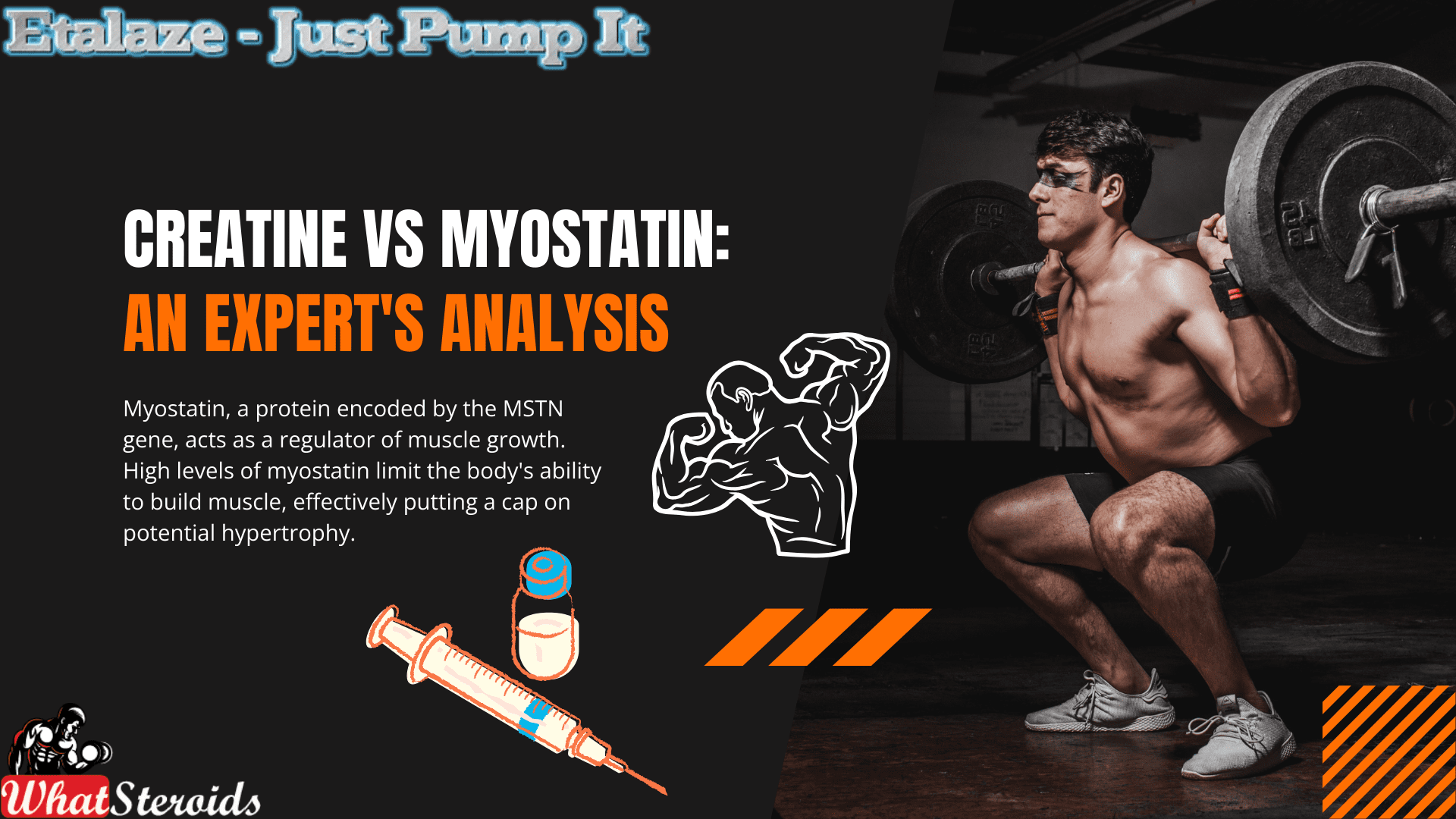
Myostatin, a protein encoded by the MSTN gene, acts as a regulator of muscle growth. High levels of myostatin limit the body's ability to build muscle, effectively putting a cap on potential hypertrophy. Inhibiting myostatin has become a focal point for bodybuilders looking to break through plateaus and achieve significant muscle gains. The question is: can creatine, a popular and widely available supplement, help in this regard?
Medical History of Myostatin and Creatine
Myostatin and creatine, while popular now in the bodybuilding world, have their roots in entirely different contexts:
Myostatin: Natural Muscle Growth Regulator
Myostatin is a protein originally identified for its role in regulating skeletal muscle mass. In nature, it serves an evolutionary purpose: by limiting muscle growth, it conserves energy, ensuring that animals (and humans) don’t expend unnecessary resources maintaining excessive muscle tissue. This was especially important in the wild, where energy efficiency could mean the difference between survival and extinction.
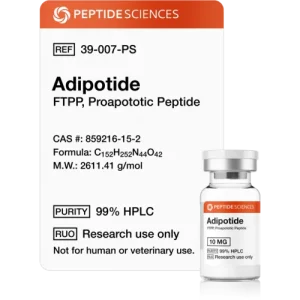 Check Adipotide (FTPP) 10mg by Peptide Science
Check Adipotide (FTPP) 10mg by Peptide Science
In the medical field, research into myostatin has focused on its role in muscle-wasting diseases. Scientists are exploring ways to inhibit myostatin to treat conditions like muscular dystrophy, where excessive muscle loss impairs quality of life. This therapeutic potential is where the idea of myostatin inhibition first began—long before bodybuilders latched onto the concept.
Creatine: Energy and Medical Applications
Creatine was originally studied for its role in energy metabolism. It’s a naturally occurring compound stored in muscle cells and plays a critical part in replenishing ATP (adenosine triphosphate), the body’s primary energy currency during short, high-intensity activities.
Before becoming a bodybuilding staple, creatine gained recognition in medical and sports science for its ability to improve athletic performance and assist with recovery. Furthermore, in medicine, creatine was investigated for neurological conditions such as Parkinson’s disease, Huntington’s disease, and muscular dystrophy, given its potential to improve muscle function and brain energy metabolism.
In the sports world, it was initially adopted by sprinters and weightlifters in the 1970s and 1980s for its energy-enhancing benefits.
Both myostatin and creatine have found new life in bodybuilding circles, demonstrating how discoveries in natural physiology and medical science can lead to transformative applications in fitness.
Benefits of Creatine as a Myostatin Inhibitor
Muscle Growth Potential: Research suggests that creatine, when paired with intense resistance training, may inhibit myostatin to a degree, fostering an environment for enhanced muscle growth.
Improved Exercise Performance: Creatine is well-known for its ability to increase ATP production, translating to better performance during high-intensity activities.
Versatility Across Fitness Levels
Whether you're a beginner or an advanced athlete, creatine offers benefits that complement various stages of muscle-building.
Must Read: A New Caffeine? What You Need to Know about Teacrine
Affordability and Accessibility
Compared to specialized myostatin inhibitors like YK-11 and ACE-031, creatine is significantly more affordable and accessible.
Side Effects of Creatine
While generally safe for most individuals, creatine supplementation does come with some potential side effects:
Water Retention: Some users experience bloating due to increased water retention in muscle cells.
Gastrointestinal Issues: High doses may lead to stomach upset or diarrhea.
Kidney Concerns: Although rare, prolonged excessive use could strain the kidneys, particularly in individuals with pre-existing conditions.
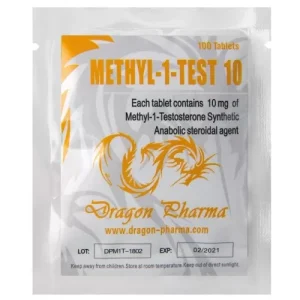 Buy Methyl-1-Test 10 -100 tabs by Dragon Pharma
Buy Methyl-1-Test 10 -100 tabs by Dragon Pharma
Alternatives to Creatine for Myostatin Inhibition
YK-11: A synthetic myostatin inhibitor derived from SARMs, offering more potent results but accompanied by more significant risks.
ACE-031: A peptide that directly inhibits myostatin, though it remains in experimental phases and is not legally approved in many regions.
Natural Alternatives
Follistatin-rich Foods: Eggs and dairy products may have natural myostatin-inhibiting properties.
Resistance Training: Intense and consistent weightlifting alone can naturally lower myostatin levels.
Where to Buy Creatine
Creatine is readily available worldwide. It can be purchased from:
Local Pharmacies and Nutrition Stores: Ideal for trusted and immediate access.
Online Platforms: Websites like Amazon, iHerb, or bodybuilding-specific stores offer a variety of brands and formulations.
Supplement Brands: Well-established brands such as Optimum Nutrition, MyProtein, and Cellucor often carry high-quality creatine.
Legality of Myostatin Inhibitors
Creatine: Creatine is completely legal and widely accepted as a dietary supplement.
YK-11 and ACE-031: These compounds exist in a legal gray area in many countries due to their experimental nature and potential risks. It's essential to research local laws before considering these options.
Best Stores and Suppliers
For reputable products, consider:
Transparent Labs: Known for purity and transparent labeling.
Optimum Nutrition: Offers pharmaceutical-grade creatine monohydrate.
Bulk Supplements: A great choice for bulk buyers seeking affordability and quality.
Our Advice to Bodybuilders
Always consult with a healthcare professional before starting any new supplement, especially if you are already using AAS or other advanced compounds.
Prioritize a balanced diet and consistent exercise routine. Supplements like creatine work best as part of a holistic approach to fitness.
Stay hydrated while using creatine to minimize water retention side effects and support kidney health.
Related Article: Best Syringes for Steroid Injection on Amazon
Overall
While creatine may not be as potent a myostatin inhibitor as advanced compounds like YK-11 or ACE-031, its affordability, safety, and accessibility make it a valuable addition to any bodybuilder's supplement stack. By leveraging its benefits alongside proper training and nutrition, you can maximize muscle growth and overcome plateaus, regardless of your fitness level.
Steroids
Raloxifene (Evista) 101: A Non-Surgical Solution for Gyno
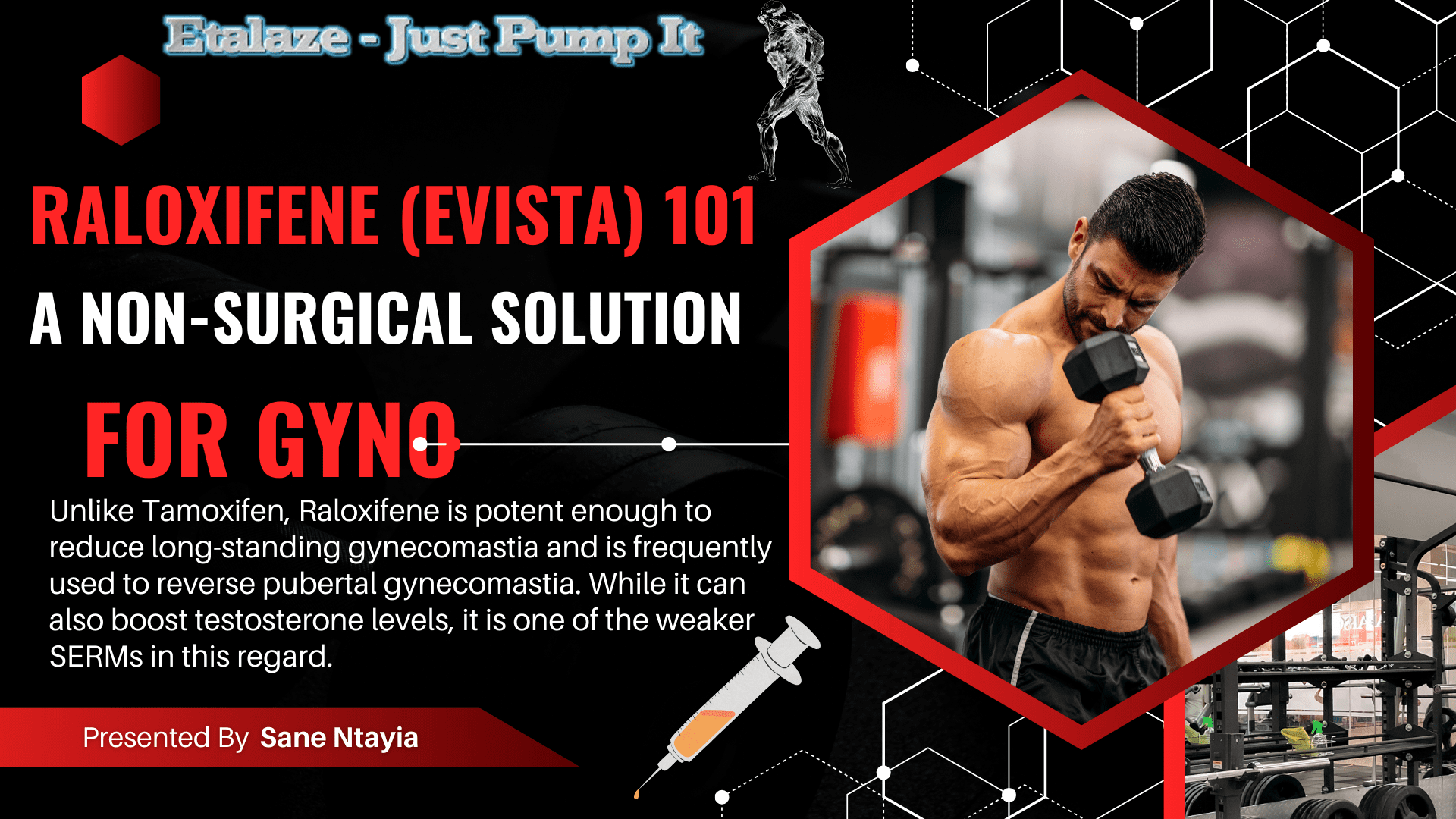
Raloxifene, a selective estrogen receptor modulator (SERM), is one of the most valuable yet less common options available today. Originally developed to prevent and treat breast cancer similar to Tamoxifen, it has gained popularity among bodybuilders seeking to prevent or eliminate gyno.
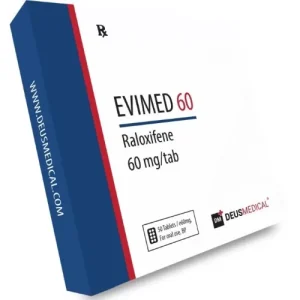 Click Here to Buy Evimed 60 by Deus Medicals
Click Here to Buy Evimed 60 by Deus Medicals
Unlike Tamoxifen, Raloxifene is potent enough to reduce long-standing gynecomastia and is frequently used to reverse pubertal gynecomastia. While it can also boost testosterone levels, it is one of the weaker SERMs in this regard.
How it Works
Raloxifene functions by blocking estrogen receptors in the breasts, which helps prevent or treat both gynecomastia and breast cancer. Additionally, it blocks estrogen receptors in the hypothalamus, stimulating testosterone production.
Beyond these primary benefits, Raloxifene can enhance bone mass, combat osteoporosis, and lower cholesterol levels.
Potential Side Effects
While Raloxifene is considered a generally safe and effective medication, like all drugs, it comes with its own set of potential side effects. One of the most notable is the reduction in Insulin-like Growth Factor 1 (IGF-1) levels. IGF-1 plays a key role in muscle growth and repair, so decreased levels could potentially impact athletic performance or recovery.
However, compared to other medications in its class, Raloxifene has a relatively low risk of causing severe liver toxicity. Users are less likely to experience harmful effects such as blood clots, mood swings, or sexual dysfunction, making it a preferable choice for many.
While rare, some users might experience less serious side effects such as hot flashes, leg cramps, or flu-like symptoms. It's essential to consult with a healthcare professional to monitor any adverse reactions and ensure the medication is being used safely.
So, despite its efficacy, Raloxifene is not without side effects, but they are typically manageable and less severe compared to other SERMs.
Check Out Halotest 10 mg, Balkan Pharmaceuticals
For gyno reversal, the typical protocol involves taking 60mg daily for 1-2 weeks, followed by 30mg daily for up to 3 months or until the condition resolves.
Read More: Joint Stiffness on AAS, How to Manage It
Typical Protocol
For gynecomastia reversal, the typical protocol involves taking 60mg of Raloxifene per day for 1-2 weeks, followed by a reduced dose of 30mg per day for up to 3 months or until the gynecomastia is resolved. In post-cycle therapy (PCT), bodybuilders generally take 60mg per day for 4-6 weeks, and then lower the dose to 30mg per day during the last week. Raloxifene is highly effective for managing gynecomastia and supporting post-cycle recovery, making it a valuable addition to a well-optimized bodybuilding regimen.
Overall
Raloxifene (Evista) is a versatile SERM used to treat breast cancer and is popular among bodybuilders for managing gynecomastia (gyno). Unlike Tamoxifen, it effectively shrinks long-standing gyno and reverses pubertal gyno. It blocks estrogen receptors in the breast and hypothalamus, thus preventing gyno and promoting Testosterone secretion. Additionally, it improves bone mass, combats osteoporosis, and lowers cholesterol levels. For gyno, take 60mg/day for 1-2 weeks, then 30mg/day for up to 3 months. For post-cycle therapy (PCT), take 60mg/day for 4-6 weeks, then reduce to 30mg/day during the final week. This safe and effective medication has minimal side effects.
Bodybuilding
Mastering Bodybuilding in 2025: Top Fitness Tips for Success

Bodybuilding is more than just a sport; it's a lifestyle that requires dedication, discipline, and a thorough understanding of fitness principles. As the world of fitness continues to evolve, bodybuilders must stay updated with the latest trends, techniques, and scientific advancements to achieve their goals. In 2025, several innovative approaches are redefining bodybuilding. Here are essential fitness tips for bodybuilders to excel this year.
Read More: Bodybuilder Winter Clothing: Staying Warm and Stylish
Embrace Technology-Driven Workouts
In 2025, technology plays a significant role in bodybuilding. Wearable devices, fitness apps, and virtual reality (VR) training are now integral components of an effective workout regimen.
Wearable Devices
Modern wearables track everything from heart rate and sleep patterns to muscle activation and caloric expenditure. Utilize these devices to monitor your progress and make data-driven adjustments to your training and nutrition plans.
Fitness Apps
Leverage fitness apps for customized workout plans, progress tracking, and virtual coaching. Many apps now incorporate artificial intelligence to provide personalized feedback and recommendations.
Virtual Reality Training
VR technology offers immersive workout experiences, allowing bodybuilders to simulate different training environments and scenarios. This can enhance motivation and add variety to your routine.
Focus on Functional Strength
While hypertrophy (muscle growth) remains a primary goal, functional strength is gaining importance. Functional strength training improves overall performance, reduces the risk of injury, and enhances daily activities.
 Check Out Our1 4 Weeks Quality Strength & Lean Muscles
Check Out Our1 4 Weeks Quality Strength & Lean Muscles
Compound Movements
Incorporate compound exercises like squats, deadlifts, and bench presses. These movements engage multiple muscle groups and joints, promoting balanced strength development.
Core Stability
Prioritize exercises that strengthen the core, such as planks, Russian twists, and leg raises. A strong core supports better lifting mechanics and reduces the risk of lower back injuries.
Optimize Nutrition for Muscle Growth and Recovery
Nutrition is the cornerstone of successful bodybuilding. In 2025, the focus is on personalized nutrition plans tailored to individual needs and goals.
Protein Intake
Ensure adequate protein intake to support muscle repair and growth. Aim for 1.6 to 2.2 grams of protein per kilogram of body weight per day, depending on your training intensity and goals.
 Click Here to Buy SynthaTrope By SynthaPharma
Click Here to Buy SynthaTrope By SynthaPharma
Nutrient Timing
Pay attention to nutrient timing to maximize muscle recovery and growth. Consume protein and carbohydrates within 30 minutes post-workout to replenish glycogen stores and kickstart muscle repair.
Supplements
Utilize supplements wisely. Creatine, branched-chain amino acids (BCAAs), and omega-3 fatty acids are popular choices for enhancing performance and recovery.
Prioritize Mental Health and Mindfulness
Mental health is increasingly recognized as a critical component of overall fitness. Incorporating mindfulness practices can improve focus, reduce stress, and enhance performance.
Meditation
Incorporate meditation into your daily routine to reduce stress and improve mental clarity. Mindfulness meditation can enhance your mind-muscle connection during workouts.
Visualization
Use visualization techniques to mentally rehearse your workouts. Visualizing successful lifts and achieving your goals can boost confidence and motivation.
Rest and Recovery
Prioritize rest and recovery to prevent burnout and overtraining. Ensure you get 7-9 hours of sleep per night and incorporate rest days into your training schedule.
Leverage Advanced Training Techniques
Advanced training techniques can help break through plateaus and stimulate muscle growth. In 2025, several methods are gaining popularity among bodybuilders.
Blood Flow Restriction (BFR) Training: BFR involves restricting blood flow to the muscles during low-intensity exercises. This technique can enhance muscle growth and strength without the need for heavy weights.
Eccentric Training: Focus on the eccentric (lowering) phase of exercises. Eccentric training can stimulate greater muscle damage and growth compared to traditional concentric movements.
Periodization: Implement periodization into your training plan. Varying the intensity, volume, and type of exercises can prevent plateaus and ensure continuous progress.
Incorporate Recovery and Mobility Work
Recovery and mobility are essential for preventing injuries and maintaining optimal performance. In 2025, bodybuilders are paying more attention to these aspects of training.
Foam Rolling and Myofascial Release: Use foam rollers and massage balls to release muscle tightness and improve flexibility. Regular myofascial release can reduce soreness and enhance recovery.
Stretching: Incorporate dynamic stretching before workouts and static stretching after workouts. Stretching improves range of motion and prevents muscle imbalances.
Cryotherapy and Hydrotherapy: Explore recovery techniques like cryotherapy (cold therapy) and hydrotherapy (water therapy) to reduce inflammation and accelerate muscle recovery.
Engage in Continuous Learning and Community Building
The fitness industry is constantly evolving, and staying informed is crucial for success. Engage in continuous learning and connect with the bodybuilding community for support and motivation.
Educational Resources: Read books, watch videos, and attend seminars to stay updated on the latest research and trends in bodybuilding.
Community Engagement: Join online forums, social media groups, and local bodybuilding clubs. Sharing experiences and knowledge with fellow bodybuilders can provide valuable insights and encouragement.
Professional Guidance: Consider working with a certified personal trainer or coach. Professional guidance can help you optimize your training and nutrition plans, ensuring you're on the right track.
With your FB Plus subscription or active FB Plus Pass, you now have access to 124 weeks of our most popular workout programs, which typically sell for $10-$30 each. Additionally, our popular 4-week Meal Plan is included. This is on top of the 38 Challenges and Programs that are already available to Plus members.
We've also introduced a new feature that many of you have requested. To assist you in choosing your next program, you can now preview each day of any program from its detail view. This feature lets you see all the included workout videos and content before you schedule it, ensuring you know exactly what to expect.
Conclusion
In 2025, bodybuilding is more than just lifting weights; it's a holistic approach to fitness that encompasses technology, nutrition, mental health, and advanced training techniques. By embracing these fitness tips, bodybuilders can achieve their goals, stay injury-free, and enjoy a fulfilling fitness journey. Remember, consistency and dedication are key to success in bodybuilding. Stay committed, keep learning, and most importantly, have fun on your path to becoming the best version of yourself.
-

 Steroids2 years ago
Steroids2 years agoVOX Testing: Why Bodybuilders Must Have It Tested Regularly
-

 Steroids2 years ago
Steroids2 years agoShavers and Other Body Grooming Equipment for Bodybuilders In 2023
-

 Steroids2 years ago
Steroids2 years agoChatGPT and Other Avenues to Find Great Bodybuilding Coaches
-

 Steroids2 years ago
Steroids2 years agoBest Oil Recommendations Before Competition for Subtle Shimmer
-

 Steroids2 years ago
Steroids2 years agoPowerlifting Vs Power Building: Find Out the Big Difference and When to Shift Between the Two
-

 Anabolic Steroids1 year ago
Anabolic Steroids1 year agoLegality of Anabolic Steroids In Latin America
-

 Nutrition1 year ago
Nutrition1 year agoEverything Nutritional Food: What’s Too Much Or Too Little
-

 Bodybuilding Products12 months ago
Bodybuilding Products12 months agoTelmisartan In Bodybuilding: An Expert’s Advice
-

 Beginners2 years ago
Beginners2 years agoTren Cycle for Beginners
-

 Bodybuilding1 year ago
Bodybuilding1 year agoList of FDA-Approved Peptides
-

 Bodybuilding2 years ago
Bodybuilding2 years agoCompetition Prep Cycle for Pro Bodybuilders
-

 Anabolic Steroids10 months ago
Anabolic Steroids10 months agoHow Much Do You Know About B-AET? A Fat Burner You’ve Been Missing
-

 Bodybuilding1 year ago
Bodybuilding1 year agoChia Seeds in A Bodybuilder’s Diet: An Expert’s Advice
-

 Steroids11 months ago
Steroids11 months agoAnadrol Cycle: Benefits, Doses, Alternatives, etc.
-

 Bodybuilding7 months ago
Bodybuilding7 months agoPrimal Movements: Our Ultimate Guide for Maximum Results
-

 Anabolic Steroids8 months ago
Anabolic Steroids8 months agoJoint Stiffness: How to Manage It While on AAS
-

 Product Reviews10 months ago
Product Reviews10 months agoTop Vitamins for Skin Health
-

 Steroids9 months ago
Steroids9 months agoOmnitope (Oxytocin)
-

 Bodybuilding1 year ago
Bodybuilding1 year agoHow Much Is Too Much Cardio? Understanding Heart Rate Zones
-

 Steroids10 months ago
Steroids10 months agoMajor Bodybuilding Peptides Explained
-

 Bodybuilding9 months ago
Bodybuilding9 months agoHormone Replacement Therapy (TRT) Cycle Guide
-

 Bodybuilding8 months ago
Bodybuilding8 months agoHow Effective is Bone Broth for Recovery?
-

 Anabolic Steroids1 year ago
Anabolic Steroids1 year agoStart The New Year Strong With These Tips
-

 Steroids1 year ago
Steroids1 year agoTrenbolone: Why it Remains A Beast In the Market
-
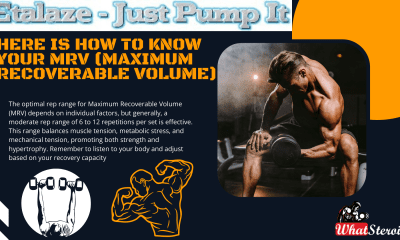
 Bodybuilding10 months ago
Bodybuilding10 months agoHere Is How To know Your MRV (Maximum Recoverable Volume)



